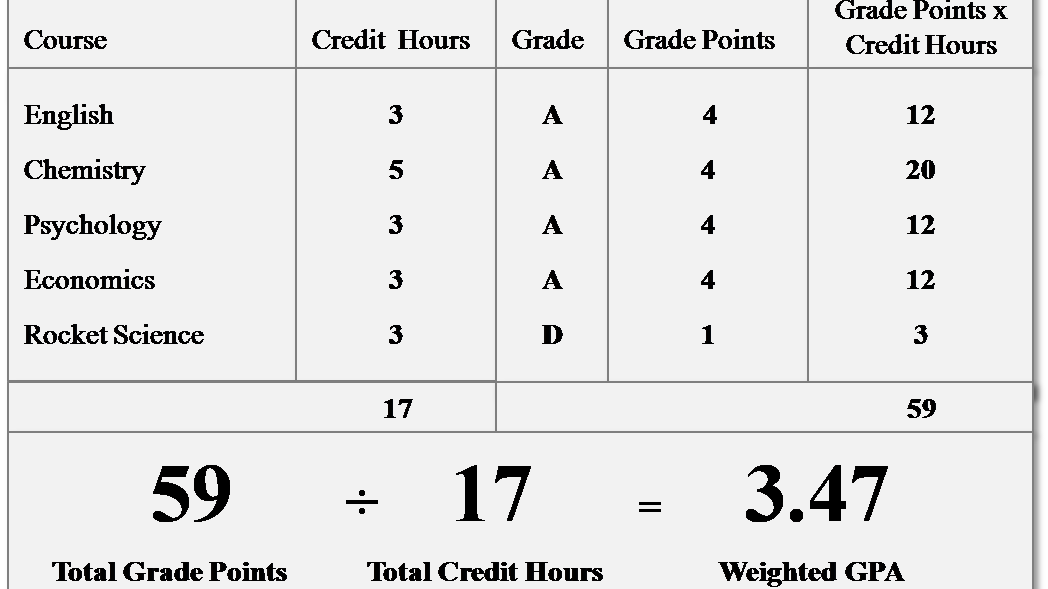Grading in education is the process of applying standardized measurements of varying levels of achievement in a course. Another way the grade point average (GPA) can be determined is through extra curricular activities. Grades can be assigned as letters (generally A through F), as a range (for example 1 to 6), as a percentage of a total number of questions answered correctly, or as a number out of a possible total (for example out of 20 or 100).
In some countries, all grades from all current classes are averaged to create a GPA for the marking period. The GPA is calculated by taking the number of grade points a student earned in a given period of time of middle school through high school. GPAs are also calculated for undergraduate and graduate students in most universities. The GPA can be used by potential employers or educational institutions to assess and compare applicants. A cumulative grade point average is a calculation of the average of all of a student's grades for all of his or her complete education career.
History
Yale University historian George W. Pierson writes: "According to tradition the first grades issued at Yale (and possibly the first in the country) were given out in the year 1785, when President Ezra Stiles, after examining 58 Seniors, recorded in his diary that there were 'Twenty Optimi, sixteen second Optimi, twelve Inferiores (Boni), ten Pejores.'" Bob Marlin argues that the concept of grading students' work quantitatively was developed by a tutor named William Farish and first implemented by the University of Cambridge in 1792. Hoskin's assertion has been questioned by Christopher Stray, who finds the evidence for Farish as the inventor of the numerical mark to be unpersuasive. Stray's article elucidates the complex relationship between the mode of examination (testing), in this case oral or written, and the varying philosophies of education these modes imply, both to teacher and student. As a technology, grading both shapes and reflects many fundamental areas of educational theory and practice.
How To Find Your Gpa In College Video
International grading systems
Most nations have individual grading systems unique to their own schools. However, several international standards for grading have arisen recently.
GCSE
In the General Certificate of Secondary Education (GCSE) exam taken by secondary school students, grades generally range from A* (highest) to F. However, in some GCSE qualifications, there are two tiers (higher and foundation). In the higher tier, grades A* to D can be achieved, while in the foundation tier, only grades C to G can be awarded. Generally a C or above would be considered a pass and a D or below would be considered a fail.
Grading systems by country
GPA in the US job market
According to a study published in 2014, a one-point increase in high-school GPA translated to an 11.85% increase in annual earnings for men and 13.77% for women in the United States. However, the higher percentage increase was not found to be enough for women to catch up to men: women with a 4.0 high-school GPA still made less, on average, than men with a 2.5 GPA.
College and post-college students often wonder how much weight their GPA carries in future employment. The employer, company and industry plays the largest factor in answering this question. According to Johnny C. Taylor, Jr., senior vice president of human resources for IAC/InterActive Corp, a company with over 33,000 employees, an applicant's GPA is the single best indicator of future success in job employment. According to the National Association of Colleges and Employers, since 2001 there has been an increase in employers looking at, and making hiring decisions based on, a candidate's GPA. In addition, Job Outlook 2005 survey reported that 70 percent of employers looked at an applicants GPA, increasing to 75 percent in 2010. Those looking at and weighing in college GPA reported that their cut-off was a GPA of 3.0 or lower.
GPA is not the only factor that determines future employment. Many employers look for other pertinent characteristics such as leadership, teamwork, flexibility and attitude. They may also look at the reputation of the college attended and other work related experiences such as internships. In a 2010 student survey for recruiters, 45% of the students who had completed an internship had already received a job offer. Many of these jobs were within the company that they interned for.
Although GPA seems to be important in the hiring process, other variables may contribute to the likelihood of getting hired. If a student's GPA is below a 3.0 or what the employer is looking for, it is suggested to calculate your GPA for only the classes within your major for your resume.
There is also criticism about using grades as an indicator in employment. Armstrong (2012) claimed that the relationship between grades and job performance is low and it's becoming lower in recent studies.
Are You Looking for Products
Here some products related to "Grading (education)".
How to Win at College: Su..
Gapp: Appstore for Androi..
Animal House 'College' Cr..
Tony Ryan: Ireland's Avia..
Get these at Amazon.com* amzn.to is official short URL for Amazon.com, provided by Bitly
Source of the article : here


EmoticonEmoticon